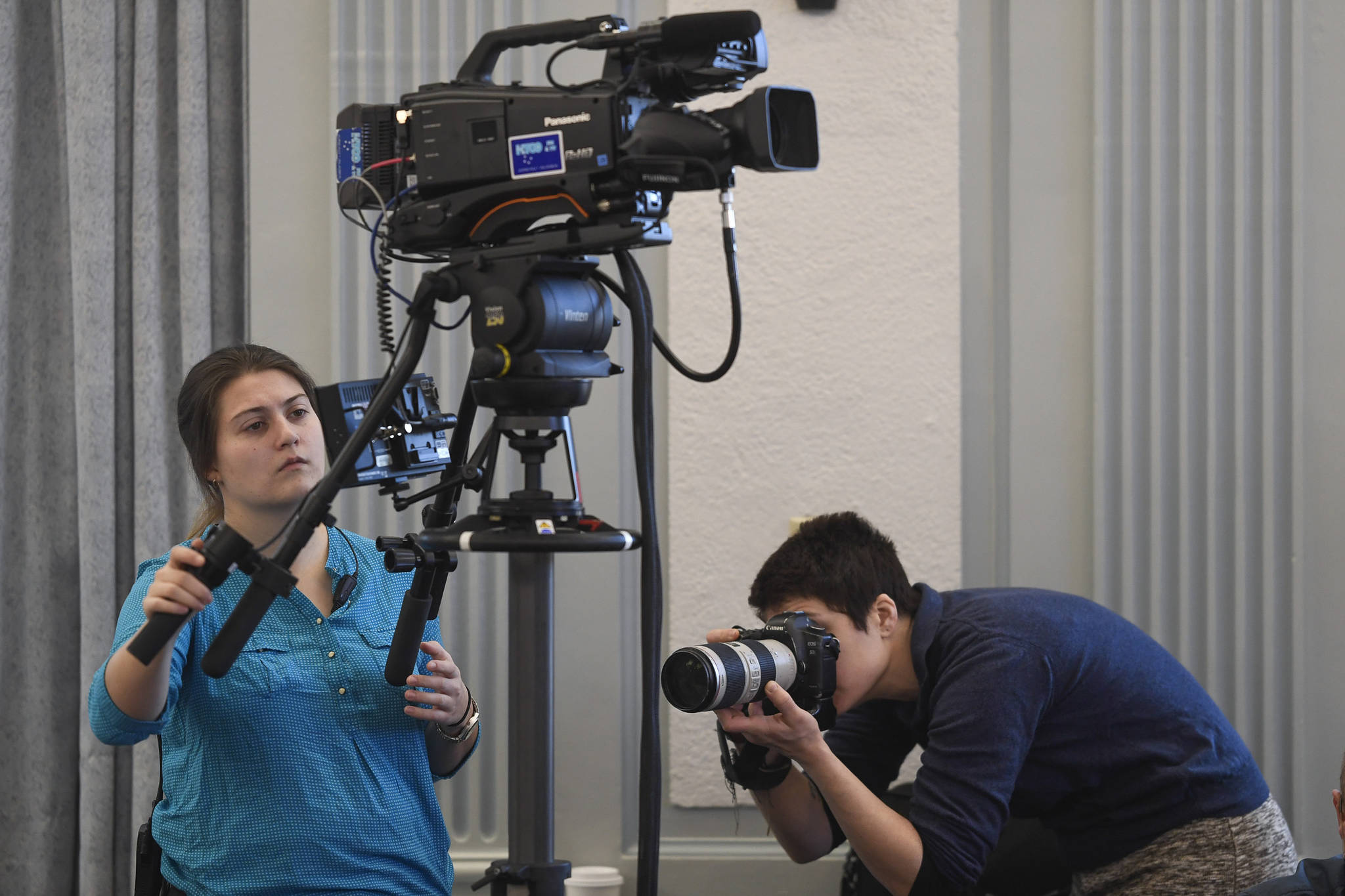The state of Alaska contributes about $3.5 million annually to support public radio and television programs across the state. Gov. Mike Dunleavy’s budget proposal would cut this state assistance out completely.
Last week, Dunleavy released his budget, which followed up on his campaign promise to align the state’s revenue and expenditures rather than dip into savings. To do so, he proposed an unprecedented $1.6 billion cut to the operating budget.
[Experts: State could lose tens of thousands of jobs if budget proposal goes through]
By cutting out public media funding, Alaska would save $3.5 million in the next fiscal year. This equates to roughly 0.22 percent of total proposed cuts. But what would Alaskan’s lose?
Each year this $3.5 million grant is distributed in varying amounts to Alaska’s 27 public radio stations and seven television stations.
For example, KTOO-TV received an allocation of $75,700 for the current year. The KTOO radio station received $77,041, according to an an Alaska Public Broadcasting Commission document.
This state grant is not the sole source of funding for public media in Alaska. The state grant accounts for about 7 percent, or $400,000 of Alaska Public Media’s total funding. Alaska Public Media includes KSKA 91.1 FM in Anchorage and produces a number of radio shows including the “Midnight Oil” podcast. Alaska Public Media also receives federal funding, about $1 million or 18 percent of its budget. The vast majority, 75 percent, or $4.2 million of Alaska Public Media’s funding comes from community donations.
[After 40 years of balloons, magic and radio, Jeff Brown retires from KTOO]
It’s difficult to say how these cuts might affect the different public media organizations in Alaska.
“A station like the KTOO complex will probably survive,” Rep. Sara Hannan, D-Juneau said. “The more rural parts of public radio may not…I of course oppose these cuts. I will fight for that small subsidy. Public broadcasting in Alaska has been a lifeline to rural Alaska.”
Hannan said public radio is especially important to rural communities because these markets are not ideal for private radio to be successful. Hannan noted that some have argued that rural Alaskans can just use the internet to stream the radio, but high costs and lack of infrastructure make that impossible in some places.
“Certainly in certain parts of Alaska the idea of just beaming it out there won’t work,” Hannan said of internet radio.
Hannan called the proposed cut “short sighted.”
“They’ve found there’s a public safety element. In most of Alaska there is no network service that will provide weather forecasts and tsunami warnings that public broadcasting puts into every corner of Alaska.
Much like the University of Alaska system that is facing a $155 million cut, leaders at the different networks will have to make difficult decisions on how to implement the cuts at their respective radio stations. That could result in cuts to programming, job positions or other areas.
Of course, the budget is not final and the House and Senate will work on the budget.
Other Southeast Alaska radio station grant allocations for the current fiscal year include: KCAW in Sitka received $78,123; KSFK, Petersburg received $76,499; KHNS, Haines received $74,876; KRBD, Ketchikan received $78,123; KSTK, Wrangell received $75,417.
• Contact reporter Kevin Baird at 523-2258 or kbaird@juneauempire.com. Follow him on Twitter at @alaska_kev.

